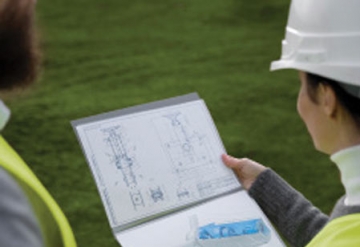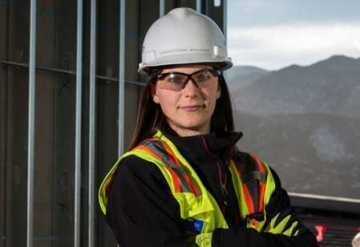THANK YOU FOR SUBSCRIBING

Safety Innovation - Non-Entry Rescue in Confined Spaces
Bill Sullivan, Utility Training Manager, Aldridge Electric

 Bill Sullivan, Utility Training Manager, Aldridge Electric
Bill Sullivan, Utility Training Manager, Aldridge ElectricWith a passion for training the next generation of tradespeople, I recently invented a means for non-entry rescue that I believe will be an industry game-changer and could potentially save many lives.
An industry professional for more than 30 years, I began my career as a union employee and moved on to several management positions before transitioning to an upward series of training positions. Post-retirement from a position at a local utility provider, I came to a nationwide infrastructure contractor, Aldridge Electric, to help develop an entirely new way to train on complex underground work. My expertise in field labor management and all aspects of electrical distribution is shared with crews through the educational programs I curate and deliver.
The training employees receive is fundamental to maintaining Aldridge’s strong safety culture and keeping everyone out of harm’s way. Aldridge strives to ensure that each employee is trained and that they are confident in the field.
That loyalty and commitment to employees offer the reassurance that any employee within the company has the right and the ability to stop work if they feel unsafe. These policies are a true testament to Aldridge’s allegiance to keeping each individual within the organization safe and striving for an incident and injury-free culture.
Before any Aldridge employee makes their way into a confined space, their journey begins with Aldridge’s custom-made Utility Training Trailers. I designed these trailers myself and traveled with them across the country, training and qualifying the union workforce to do complex work in confined spaces.
The confined space training program leverages a massive trailer and a tractor-trailer to provide on-the-job training. The Mobile Training Trailer and the Manhole Training Trailer, in which employees are trained on several modules, including safely performing work on network protectors, live network secondaries, utility access hole assessments, cable splicing, and other tasks associated with utility work.
The Manhole Training Trailer was built to mimic the enclosed space found inside a utility access hole. It supports employee training for safe entry into enclosed spaces and includes testing for stray voltage, air monitoring, assessing cable and equipment, and use of IR Cameras.
Confined space work can be dangerous, and there is a chance that someone can become impaired within the space while working. Alongside a team of passionate Aldridge safety professionals and operations personnel, I helped develop a policy and training program for non-entry rescue in the event that someone becomes incapacitated.
The key to a successful non-entry rescue is a rescue pole, dubbed the “Sully Stick,” named after my namesake. The components of the stick include an extendable fiberglass stick and a “pelican hook” along with the traditional tubular utility access hole guard and windlass material device. The Sully Stick is part of a rescue kit that every trained employee is required to keep on their work truck.
“The key to a successful non-entry rescue is a rescue pole, dubbed the “Sully Stick,” named after my namesake. The components of the stick include an extendable fiberglass stick and a “pelican hook” along with the traditional tubular utility access hole guard and windlass material device.”
When a downed entrant is identified, the procedure includes calling for emergency services before attempting to initiate the rescue. The potential rescuer would have been trained in various scenarios that may require additional personal protective equipment. Utilizing the rescue kit and the training received, this retrieval method can be completed in under three minutes. Given that the average time for emergency services to arrive at any emergency scene is eight minutes, this method is designed to outfit all crew members with the knowledge and resources to save a life - safely.
The trailers, coupled with our various training programs, offer a one-of-a-kind approach to rescue that is industry-changing, and a testament to the innovative spirit found within our passionate Aldridge employees.
Read Also
Development of the Logistics Warehousing Market in Brazil
Driving Innovation and Preserving Tradition
Operational Leadership VS Field Leadership in the Utility Construction Business
People-First Innovation: Developing Virtual Design and Construction (VDC) Training Programs to Empower Field Team Members
Sustainable Projects: Aligning Business and Purpose in Latin America
Engage Smarter: Why Constraints Matter More Than Hazards

 Copyright © 2025 All Rights Reserved | by:
Copyright © 2025 All Rights Reserved | by: Construction Tech Review
| Subscribe | About us | Sitemap| Editorial Policy| Feedback Policy













